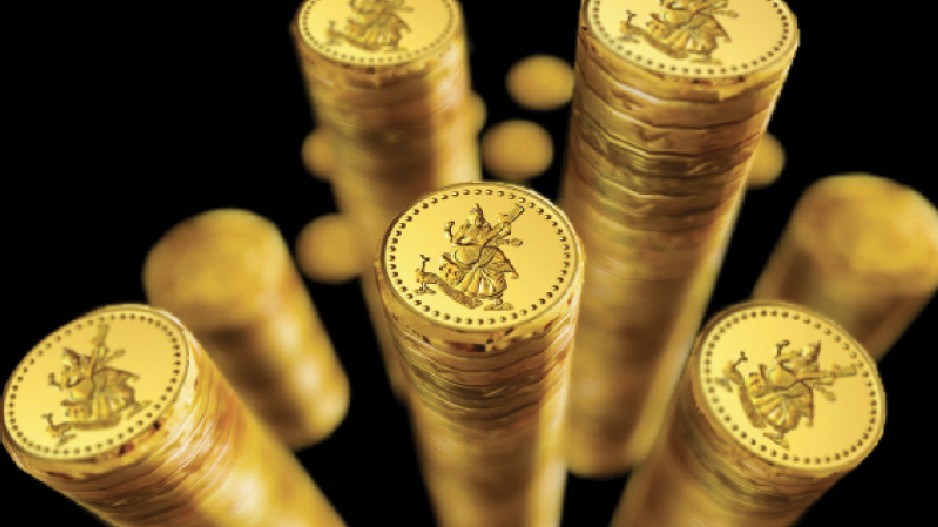Indian Hindu religious teacher Shoban Sarkar has no bank account, no money to put in it if he had one and no significant possessions, but he has an acute understanding of one of the central ills of his country's economy.
Which is why, when he had a vision that 1,000 tonnes of gold worth about $40 billion is buried in the shadow of an ancient temple in the village of Daundia Khera in India's northern state of Uttar Pradesh, he was overcome with nationalist pride and joy.
Instead of trying to cash in on his dream, Sarkar went immediately to the Archaeological Survey of India (ASI) in the expectation that the horde would save the country's economy.
"I cried the day I realized that India is going to collapse economically," the swami told the local Mail Today newspaper. "It is hidden treasure for the country."
The story swept through the Indian media, which has been swamped in recent months with stories about a continuing gold crisis.
Indians are the world's most avid gold buyers but are rushing even faster than usual to buy up the precious metal as a hedge against the country's rampant inflation, poor economic performance and a current account deficit at an all-time high.
The ASI came under such political pressure to follow up on Swami Sarkar's vision that it has begun excavations in the village.
Indians buy over two tonnes of gold every day, and last year these sales amounted to $52 billion.
But most of the gold has to be imported, and this is a major factor in India's mounting trade deficit.
To try to curb the impact, in July the government imposed a rule that 20% of imported gold must be exported after being made into jewelry.
The regulation has caused much confusion. The market has been made even more chaotic by the approach of the Dhanteras celebration starting on November 1, when it is traditional to buy gold to invoke prosperity. This is also the beginning of the auspicious time for weddings, when gold is the favoured gift.
Reports from India say there are such shortages of the metal that traders are getting a premium of about $100 an ounce over the current spot price of around $1,300 an ounce.
However, even if Swami Sarkar's vision proves true, $40 billion in gold will not solve India's economic problems, problems that have an acute political edge with the approach of federal parliamentary elections in May next year.
India's current account deficit has been rising consistently for a decade. In the second quarter of this year – April through June – it was $21.8 billion, up from $18.1 billion in the first quarter.
India's inflation rate has been in double digits for seven years. The problems have been particularly acute in food prices, which have risen 90%, and energy, which has gone up 68% in price in that period.
At the same time industrial output has stagnated in response to the global economic crisis and with it industrial investment.
The prospect of the government pushing interest rates higher to curb inflation is likely to mean continuing slack investment in manufacturing. Thus, India will not be best positioned when the global market revives.
Indian families are reacting to the uncertainty by shifting their spending away from assets like household goods and real estate to inflation-proof valuables like gold.
The Indian government continues to predict growth rates of 5% for the next couple of years, though the International Monetary Fund offers a more pessimistic 3.8%.
What growth there is in the Indian economy has been largely in the service sector, and then only in some industries such as banking, insurance, communications and business services. •
Jonathan Manthorpe ([email protected]) has been an international affairs columnist for nearly 40 years.Forum aimed at amping up Canada-India trade
Against a backdrop of much economic and political uncertainty, the Canada-India Business Council is holding its third annual forum in India's commercial hub of Mumbai at the end of November.
The theme of this year's forum is "Foreign Direct Investment: Is Now The Time?"
This makes the point that India's current economic weakness presents an opportunity.
But Canadian entrepreneurs are notoriously reluctant to invest in Asia. Despite the apparent attractions of a shared democratic heritage, and a large Indian Diaspora here, bilateral trade and investment remain puny.
Two-way trade is stuck at around $5 billion a year. About 35% of Canada's exports to India are potash and pulses from Saskatchewan.
Ottawa and New Delhi are negotiating a comprehensive economic partnership agreement. Both governments are expressing the hope that, when completed, this free trade agreement will triple two-way trade to about $15 billion by 2015.
Most outside analysts and observers find this overly optimistic and unrealistic.
In a presentation at the end of last year, the Asia Pacific Foundation of Canada's senior editor Douglas Goold said that attitudes in Canada toward India are a challenge to improving business ties.
In a survey conducted by the foundation last year, only 14% of respondents expressed warm feelings toward India, though, more happily, 57% see India as an economic opportunity, Goold said.
He added that after conducting a series of interviews with business executives and officials in India and Canada he came to the conclusion "it is tough doing business in India." "To be successful," Goold continued, "you need to be patient and develop relationships. You must also understand India's history and culture, and in particular business culture. If you can fill a niche and are aggressive about pricing, you can succeed. But it is not easy."




